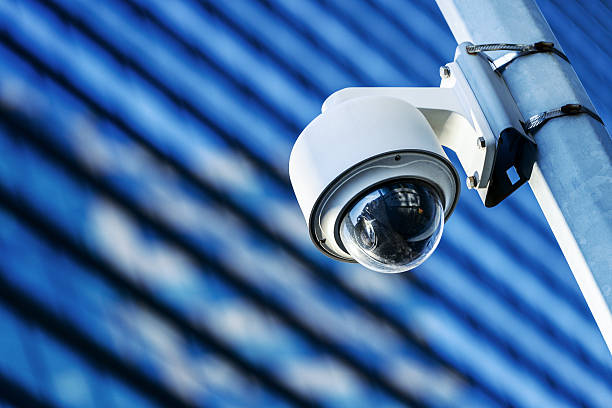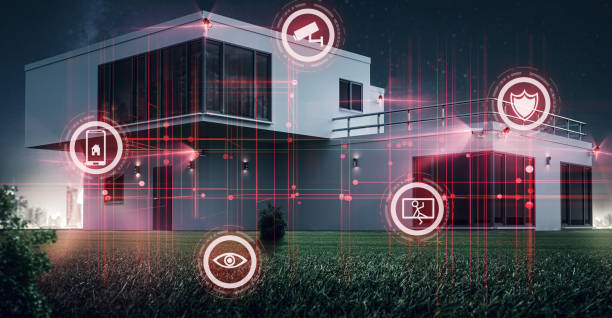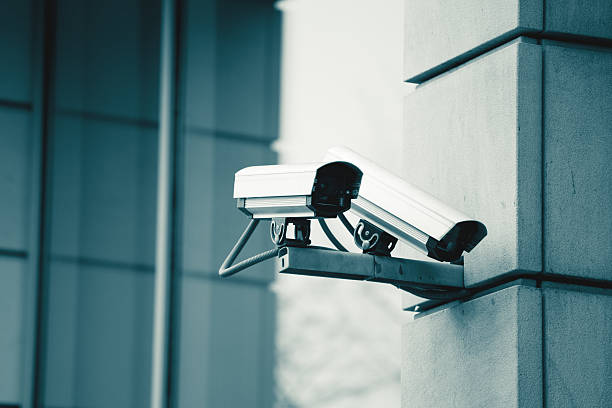Table of Contents
Security cameras have become indispensable tools in modern surveillance systems, serving as a deterrent to crime, enhancing safety measures, and providing valuable insights into security incidents. This article explores the evolution, types, benefits, and considerations of security cameras in various settings, emphasizing their importance in safeguarding properties, businesses, and public spaces.
Evolution of Security Cameras
Security cameras have evolved significantly from their analog origins to advanced digital systems equipped with high-definition (HD) video capabilities, remote access, and intelligent analytics. Initially used primarily for monitoring sensitive areas and preventing theft, modern security cameras now offer enhanced features such as motion detection, night vision, and integration with smart home systems.

Types of Security Cameras
1. Dome Cameras
Dome cameras are compact, dome-shaped devices that are commonly used for indoor and outdoor surveillance. They offer a discreet design, wide-angle views, and vandal-resistant features, making them suitable for various environments.
2. Bullet Cameras
Bullet cameras are cylindrical in shape and are typically mounted on walls or ceilings. They are designed for long-range monitoring and feature infrared LEDs for night vision capabilities, making them ideal for outdoor surveillance in low-light conditions.
3. PTZ Cameras (Pan-Tilt-Zoom)
PTZ cameras offer remote control over pan, tilt, and zoom functions, allowing operators to adjust the camera&8217;s field of view and focus on specific areas of interest. They are commonly used in large spaces requiring flexible surveillance coverage.
4. Wireless Cameras
Wireless security cameras utilize Wi-Fi or cellular networks to transmit video footage to a centralized monitoring system or cloud storage. They offer flexibility in installation and are ideal for locations where wiring may be challenging or impractical.
Benefits of Security Cameras
1. Crime Deterrence
The presence of visible security cameras acts as a deterrent to criminal activity, reducing the likelihood of vandalism, theft, and unauthorized access. Potential intruders are less likely to target properties under surveillance.
2. Monitoring and Surveillance
Security cameras provide continuous monitoring of premises, allowing security personnel or homeowners to observe activities in real-time or review recorded footage for suspicious behavior, emergencies, or incidents.

3. Evidence Collection
In the event of security breaches or criminal activities, recorded footage from security cameras serves as valuable evidence for law enforcement investigations, insurance claims, and legal proceedings.
4. Remote Access and Monitoring
Many modern security cameras offer remote access via smartphones, tablets, or computers, enabling users to view live feeds, playback recordings, and receive alerts from anywhere with an internet connection. This feature enhances convenience and responsiveness to security events.
Considerations for Security Camera Installation
1. Placement and Coverage
Effective placement of security cameras is crucial for maximizing coverage and minimizing blind spots. Consider factors such as entrances, exits, high-traffic areas, and vulnerable points of entry when determining camera placement.
2. Resolution and Video Quality
High-resolution cameras capture clear, detailed images and videos, facilitating accurate identification of individuals and events. HD (1080p) and Ultra HD (4K) cameras offer superior image quality for surveillance purposes.
3. Storage and Retention
Choose security cameras with adequate storage capacity or utilize cloud-based storage solutions to archive video recordings. Establish retention policies to comply with legal requirements and operational needs for storing surveillance footage.
4. Privacy and Compliance
Respect privacy considerations and comply with local regulations and privacy laws governing the use of security cameras in public spaces, workplaces, and residential areas. Inform individuals about surveillance activities in accordance with applicable laws.

Emerging Trends in Security Cameras
1. Artificial Intelligence (AI) and Video Analytics
Integration of AI-powered analytics enables security cameras to perform advanced functions such as facial recognition, object detection, and behavioral analysis. AI algorithms enhance real-time threat detection and proactive security measures.
2. Cloud-Based Surveillance
Cloud-based security camera systems offer scalability, remote accessibility, and centralized management of multiple camera feeds from a unified platform. They provide flexibility and cost-effectiveness for businesses and homeowners alike.
3. Integration with Smart Home Devices
Security cameras increasingly integrate with smart home devices and platforms, allowing users to automate surveillance tasks, receive alerts, and control camera settings through voice commands or mobile apps.
Conclusion
In conclusion, security cameras play a pivotal role in enhancing safety, monitoring activities, and deterring criminal behavior across residential, commercial, and public environments. From traditional analog systems to advanced digital solutions with AI capabilities, security cameras continue to evolve to meet the evolving needs of modern surveillance requirements. By implementing effective security camera systems and adhering to best practices in installation, monitoring, and privacy compliance, individuals and organizations can enhance security measures and maintain peace of mind in an increasingly interconnected world.